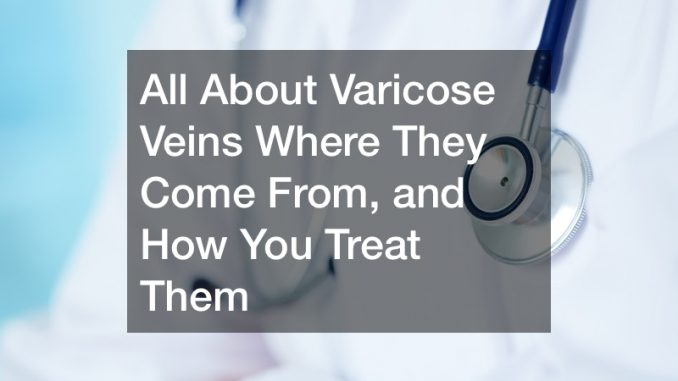

As we get older, many changes occur in our bodies. One of the unpleasant conditions many people experience when aging is varicose veins. These blue, bulging veins can occur in your legs as you age, and are more common with women who are pregnant, or with people who have sedentary jobs. They are typically found behind your knee or on other parts of your legs or ankles.

During the beginning stages of varicose veins, they can be very small and light in color. You may initially mistake them for stretch marks. When it comes to stretch marks vs. varicose veins, they are typically pink or purple – and can appear on any part of the body. If you feel your varicose veins tingling, or you have pain when walking, you should contact your doctor for an appointment as soon as possible.
Varicose veins aren’t just unattractive, they can signal a health problem, so you should let your doctor know about them when you discover them. Your doctor will want to be sure you don’t have blood clots in your legs, and that you aren’t at risk for sores in your veins. Your doctor can help you with varicose veins treatment options. They can also let you know when to see a vein specialist.

When there are blue veins on my legs, it may be time to look into getting those veins removed. At a varicose veins clinic, these veins can be “killed” with a few injections into the veins. The blood flow is then rerouted, and the ugly veins are gone. Chronic varicose veins are more common as people get older, and many people find them to be something that makes them look older. Getting them removed is a common cosmetic procedure that is easy to get and comes with little to no downtime.
So, are spider veins hereditary? They do tend to run in families. Can you remove spider veins? Yes, it can be done at many cosmetic clinics or clinics devoted to varicose veins. These clinics have trained staff who know just how to get rid of those veins so that your legs look smoother and more uniform. While it is often women who get their varicose veins taken care of, men are also able to get this type of procedure. Both men and women can get these prominent veins, and both have an interest in getting rid of them. Check with your local cosmetic clinics to see which will get rid of varicose veins.
No woman enjoys discovering varicose veins. Many patients may seek dermatological care for aesthetic reasons, but varicose veins can also signal health problems if left unchecked. Here’s a brief overview of what varicose veins are and how your dermatologist can treat them.
Varicose veins are those blue, bulging veins that appear on the legs. You may have noticed them behind your knees or on other parts of your legs. Varicose or spider veins occur when blood begins to accumulate in the vein, causing excess pressure. This is particularly common in people who sit or stand for long periods of the day and women who are pregnant. While varicose veins are not necessarily dangerous, you should have them evaluated by a dermatologist to make sure you’re not at risk for vein ulcers blood clots, and deep vein thrombosis. If you’re experiencing pain, burning, or a restless feeling in your legs, it’s time to visit the dermatologist.

Varicose veins often appear as we grow older and more sedentary. If you’re noticing them appear and your dermatologist doesn’t believe they’re serious, you can reduce your varicose veins with light exercise, hot baths, and be sure to move your legs throughout the day.
 Often, the dermatologist will suggest slightly more intensive spider vein therapy. One of the most common treatments is sclerotherapy. Your dermatologist injects a chemical to stimulate blood flow, massages the injection site and then puts on a compression stocking. After a few hours at the dermatology center, you’re safe to go home. In some cases, you can also look into light laser treatments, which remove the vein but don’t cause damage to the skin. This requires local anesthesia, but you’re often able to go home the same day and resume activities as normal.
Often, the dermatologist will suggest slightly more intensive spider vein therapy. One of the most common treatments is sclerotherapy. Your dermatologist injects a chemical to stimulate blood flow, massages the injection site and then puts on a compression stocking. After a few hours at the dermatology center, you’re safe to go home. In some cases, you can also look into light laser treatments, which remove the vein but don’t cause damage to the skin. This requires local anesthesia, but you’re often able to go home the same day and resume activities as normal.
While dermatologists may perform more advanced procedures, such as endoscopic vein surgery or vein stripping, don’t worry about having those treatments right now. Be sure to move your legs frequently throughout the day and schedule a routine visit with your dermatologist about your varicose veins. There are several treatments available to improve the look and feel of your legs.